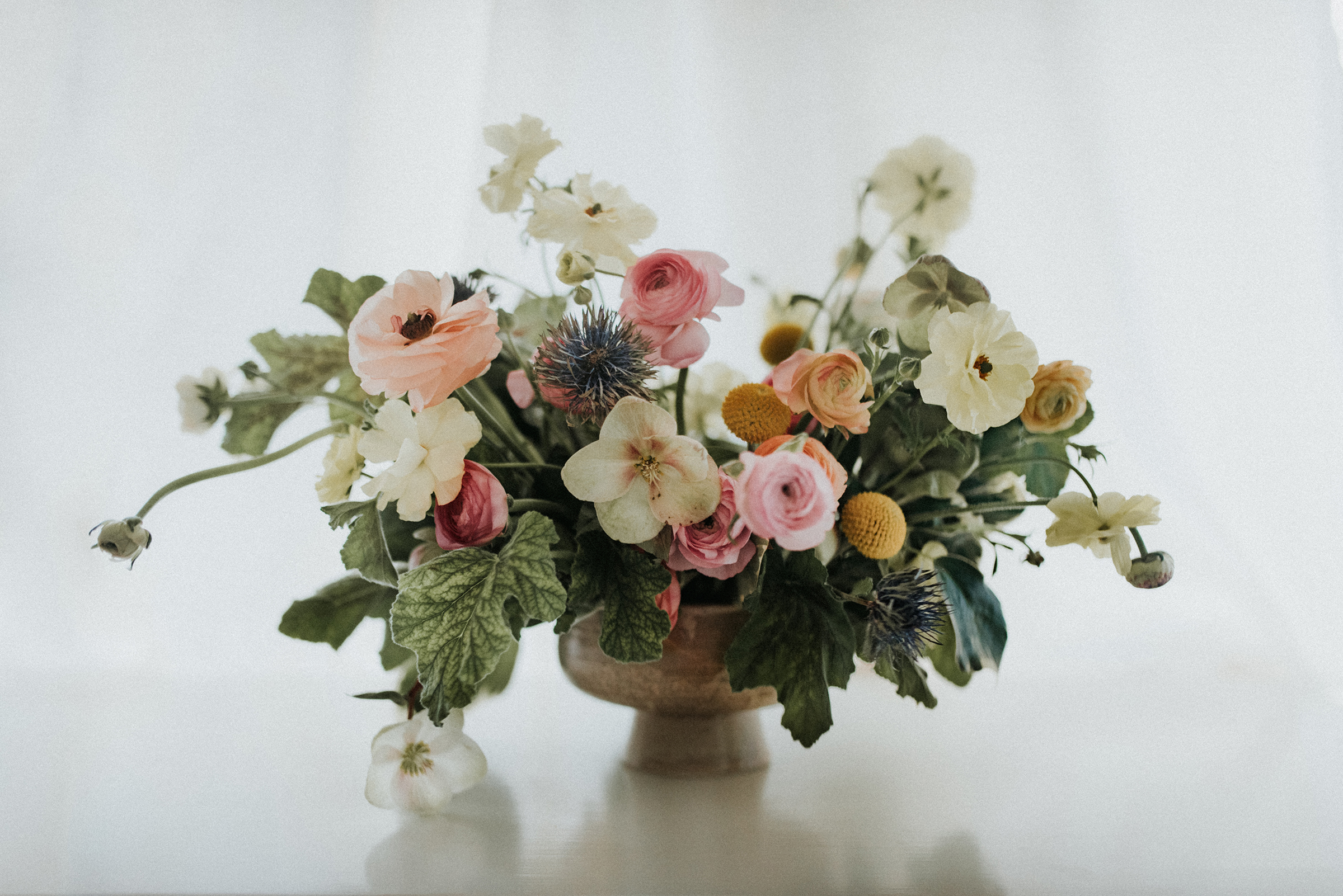As the saying goes, “April showers bring May flowers.” If, like many people around the world, you are stuck at home for the month of May, why not use this time to create your own beautiful spring flower arrangements?
Where is the best place to source your flowers?
If you are lucky, you can get them from your own garden. Plants like tulips, daffodils, lilacs, irises and peonies make for simple, easy arrangements. Or you can be more daring and incorporate wildflowers into your arrangements, or even branches from flowering trees. Branches from flowering dogwood trees and crabapple trees look beautiful and give arrangements more structure than they otherwise might have.
For those that don’t have their own gardens and/or yards, most florists sell single flowers that you can use to create your own arrangements.
The basics for beautiful spring flower arrangements
Before you start arranging your flowers, you need to to some simple things to ensure your blooms last as long as possible.
Decide on a vase
Before you start preparing your flowers, decide upon the vase you want to use. This will determine how much you need to trim the stems. A good rule of thumb is that the entire arrangement, from the very top to the bottom, should be two and a half times the height of the vase. If you are in doubt, err on the long side because you can always cut them a little shorter.
Think about the structure of your arrangement
You should consider how you want the flowers to look, vertically. Look at this photo:

Notice how at the top of the arrangement, the flowers are relatively far apart. Additionally, the flowers at the top have beautiful structures, but not very large blossoms. Look at your flowers and see which ones are best for the top. Branches from flowering trees often work well on the top.
As you work towards the vase, the flowers have bigger blooms and are arranged closer together.
You should also give some thought as to which colors looks best together. It’s better to have different colors distributed evenly throughout the arrangement, rather than all the yellow flowers bunched together in one side of the arrangement, all the purple flowers in another part of the arrangement, etc. A good rule of thumb is to make sure the colors are evenly distributed.
Now that you have an idea of the arrangement’s overall composition, you can start preparing the flowers. Take your time doing this. It will not only make for a longer lasting arrangement. It will also give you a better understanding of the structure of each stem, which will help you intuitively make a more pleasing arrangement.
Always cut the stems on an angle
This gives the stems the widest surface area for absorbing water. Make sure that after you trim the stems, you place them in water right away. Some flowers quickly form a seal over the cut area when they come in contact with air, which will hinder water absorption. Putting them in water quickly prevents this from happening.
If you use plants with tough stems, like roses, flowering trees or even lilacs, you should always smash the bottom inch or two of the stems with a hammer. Again, this increases the surface area exposed to water and increases absorption.
Trim the leaves from the lower part of the stems.
You want to trim any foliage that will be below the surface level of the water in the vase. Typically, think about having the vase 2/3 of the way filled with water.
Removing the foliage below the water level serves three purposes.
- Foliage that is under the water is an easy place for bacteria to grow. Bacteria can cause your flowers to die more quickly.
- Lots of extra foliage can make it very difficult to get the flowers in the vase.
- If you are using a glass vase, foliage under the water often looks very unsightly.
Wash your vase before you start
Make sure to use soap and warm water. Residue (even invisible) from older arrangements can foster bacteria growth. As we learned above, bacteria is not your friend.
Start arranging your flowers
Go for balance over symmetry
The key thing to keep in mind is that you want your arrangement to be balanced. It can be symmetrical, but that can often look boring and unimaginative. If you look at the arrangement below, you can see that different types of flowers are spread throughout the bouquet, but in an irregular fashion. For example, the blue spiky flowers: instead of being evenly spread throughout the arrangement, they draw your eye from the top left of the arrangement to the bottom right. This balances the arrangement, but also gives it an interesting complexity.

Work in layers
You want the biggest concentration of blooms to be in the center of the arrangement. Think of it as the heart of your arrangement. From there, arrange the flowers in layers. The layers should be increasingly sparse as you work your way out. This gives your beautiful spring flower arrangements a lightness, and even an ethereal quality.
Incorporate greens
Greens not only make an arrangement look more natural, they also help anchor the arrangement. Plus, they are usually much cheaper than fresh blossoms so are an excellent way to increase your arrangement’s volume if you are on a budget.
Make sure the arrangement looks good from all angles
This is particularly true if you are using it as a centerpiece. The exception is if you are putting it someplace like a mantle, where no one will see the back. In situations such as this, you can concentrate the flowers in the front and on the sides. However, this doesn’t apply if you are putting the arrangement in front of a mirror. In case, make sure you look at the arrangement’s reflection from a variety of angles.

Don’t be afraid of the unusual
Granted, you don’t want your arrangement to look like Audrey from The Little Shop of Horrors. That said, adding a couple unusual flowers or plants will give your arrangement a uniqueness that will make everyone think it was done by a pro.

Consider the room where you will display the arrangement
Flowers can look very different, depending upon the color of the room in which they are located. Note how the beautiful spring flower arrangement we saw above, against a white background, looks completely different against a green background.

About the beautiful spring flower arrangements you see in this post
The arrangements you see in this post are by Cassia Forêt. The photos are courtesy of the insanely Heather K. Purdy Photography. A little photography tip from Heather: “If you shoot flowers through a prism, it gives them a magical, ethereal effect, like you see here:”


